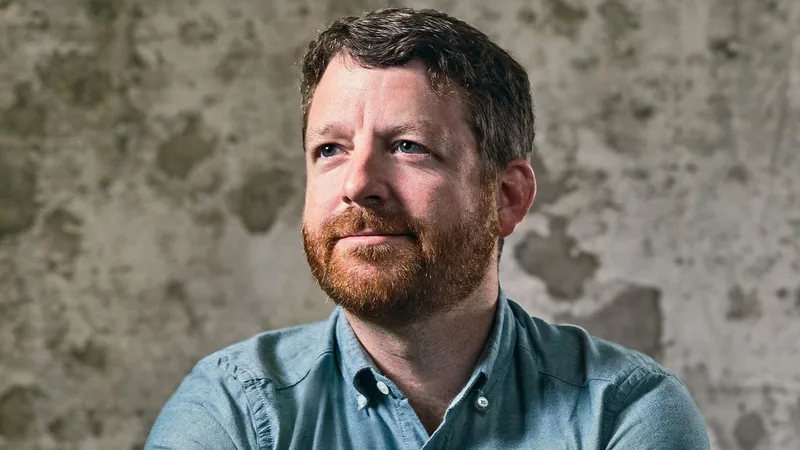
Fracking Hot Rocks: The Key to a Clean Energy Revolution—Will Politics Hinder Progress?
2024-11-19
Author: Ming
Tim Latimer, the visionary founder and CEO of Fervo Energy, is on the brink of tapping into an abundant, zero-carbon energy source buried deep in the Earth's crust. With over $400 million raised from notable investors—including tech moguls like Mark Zuckerberg and climate-focused funds led by Bill Gates—Latimer’s ambition is to turn geothermal energy into a cornerstone of the United States' clean energy portfolio.
From an early age, Latimer had a fascination with digging. His childhood dreams evolved as he witnessed the rise of coal-fired energy plants in Texas, sparking his awareness of the dual-edged nature of energy development. At just 35, he now stands at the forefront of a potentially transformative energy technology employing advanced drilling techniques to access geothermal energy.
Fervo Energy's innovative approach includes the use of fracking methods traditionally associated with oil and gas extraction. The company is strategically drilling deep wells in Utah's Escalante Desert to reach superheated rocks lying over 8,000 feet below the surface. The process involves creating fractures in these rocks and injecting high-pressure water, which turns into steam to generate energy. Currently, Fervo has successfully drilled 20 wells, each designed to produce thermal energy for approximately 2 million homes by 2030.
The support of influential backers like Liberty Energy has bolstered Fervo's growth; meanwhile, Latimer reflects on how shared expertise across traditional energy sectors can catalyze geothermal advancements. The U.S. National Renewable Energy Laboratory projects that by 2050, geothermal sources could supply up to 12% of the nation’s electricity, potentially making geothermal energy as revolutionary for clean energy as hydraulic fracturing was for oil and gas.
One of Latimer's challenges lies in the fluctuating political climate surrounding renewable energy policies. If President Trump follows through on his intention to rescind green energy incentives, it could jeopardize projects like Fervo’s Cape Station, which requires significant financial infusion to remain viable. Nevertheless, Latimer remains optimistic that Fervo can navigate these uncertainties as long as competitive conditions with other renewable sources are maintained.
Investors see parallels between the cost curves of solar energy—and Latimer is determined to exceed expectations, predicting that the cost of geothermal energy production could drop to as low as 4.5 cents per kilowatt-hour, making it a competitive alternative to wind and solar energy. Despite initial costs, Fervo has already halved its drilling operation time, showcasing improvements that could lead to significant savings.
Moreover, as tech giants pivot towards reliable energy sources to meet their growing power demands, the appeal of geothermal energy, with its consistent output and minimal waste, intensifies. Google, for instance, has already contracted 115 megawatts from Fervo to power its data centers, aligning its energy strategy with sustainable practices.
With ambitious future plans and support from familiar faces in the energy and tech communities, Fervo Energy stands at a critical juncture. The success of their geothermal projects may very well depend on a fair political landscape and continued investment in renewable technologies. As the world tackles pressing climate challenges, innovations like geothermal energy not only promise to transform our energy grid but also to substantially reduce carbon emissions for generations to come.
In a landscape where the future of energy remains uncertain, Latimer’s determination to forge ahead with geothermal energy could be a game changer—unless adverse political developments threaten to derail this green revolution. Will policymakers see the value in supporting this clean energy movement, or will we allow outdated agendas to hinder our transition to a sustainable future? The stakes have never been higher.



 Brasil (PT)
Brasil (PT)
 Canada (EN)
Canada (EN)
 Chile (ES)
Chile (ES)
 España (ES)
España (ES)
 France (FR)
France (FR)
 Hong Kong (EN)
Hong Kong (EN)
 Italia (IT)
Italia (IT)
 日本 (JA)
日本 (JA)
 Magyarország (HU)
Magyarország (HU)
 Norge (NO)
Norge (NO)
 Polska (PL)
Polska (PL)
 Schweiz (DE)
Schweiz (DE)
 Singapore (EN)
Singapore (EN)
 Sverige (SV)
Sverige (SV)
 Suomi (FI)
Suomi (FI)
 Türkiye (TR)
Türkiye (TR)